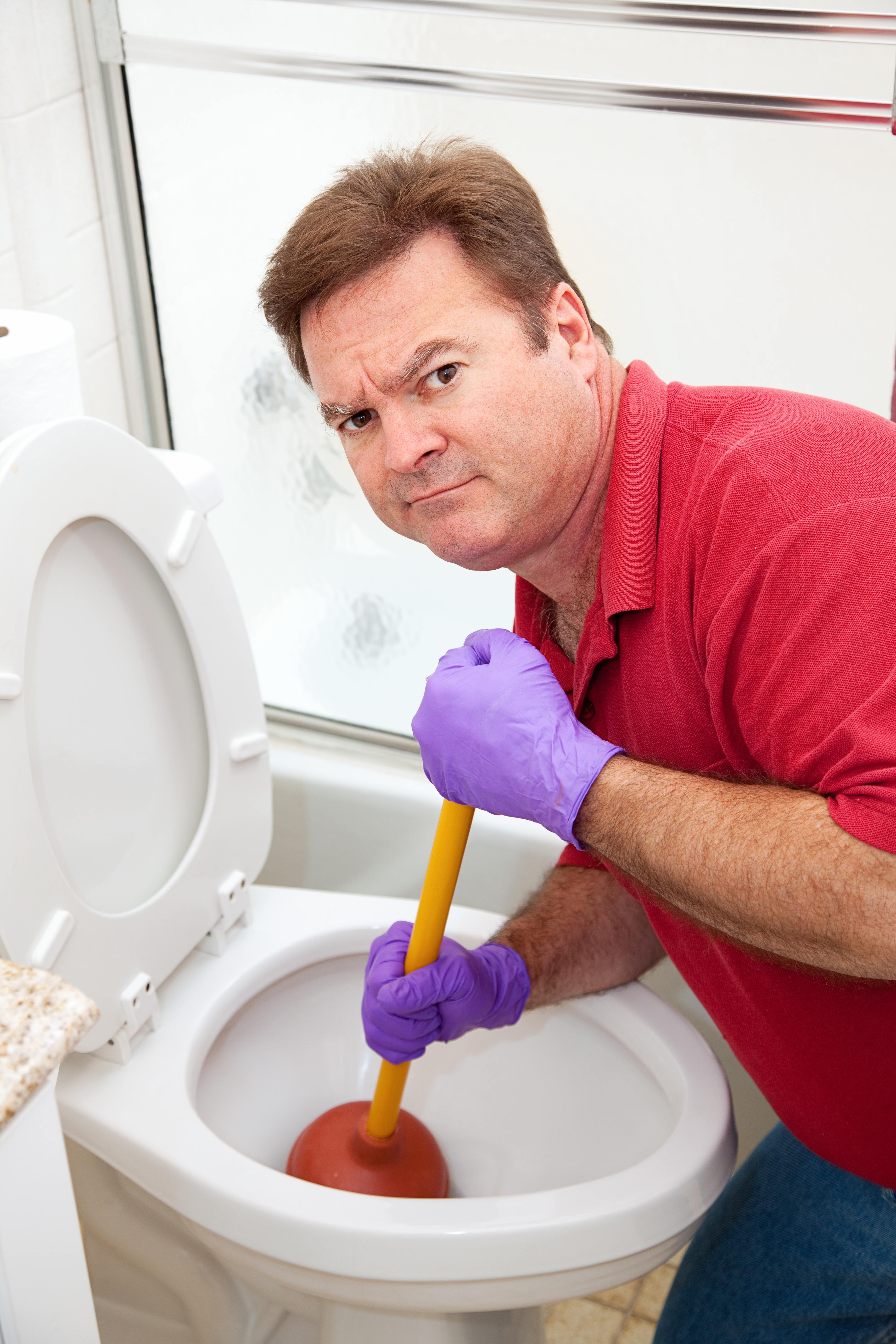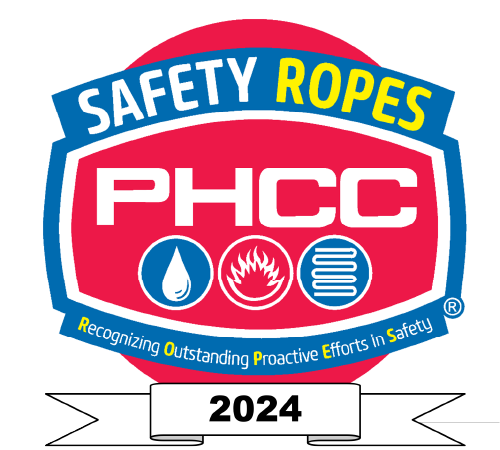Step-by-Step Guide to Unclogging a Kitchen Sink with a Plunger
Plumbing Purrrfected
Call Meow (404) 738-7228Clogs are more than just blockages; they’re opportunities for us to understand and reflect on our daily habits and their impact on our surroundings. In this section of the blog, we’ll delve into the common causes of kitchen sink clogs, illuminating not just the ‘what’ but also the ‘why’ behind these frustrating interruptions to our daily routines.

Food Waste: Often, we underestimate the consequences of washing down small bits of food. As we explore this cause, we invite you to think about the relationship between what we consume and what we discard, reflecting on our role in the cycle of waste.
Grease and Oil: These are among the sneakiest culprits. We’ll discuss how these substances, though liquid when poured, solidify within the pipelines, mirroring perhaps, how our seemingly small daily choices can accumulate and lead to significant challenges.
Embarking on the task of unclogging your kitchen sink begins with preparation, not just of tools, but of mind and space. This section helps you approach this common household problem with mindfulness and informed action, turning a mundane chore into an exercise of thoughtful engagement.
Non-Degradable Items: From eggshells to coffee grounds, some things just aren’t meant for the drain. This section encourages you to consider how these items, like certain rigid aspects of our thinking, resist breakdown and change, prompting us to reflect on flexibility and adaptability in life.
Soap Scum and Mineral Buildup: These are the result of chemical reactions between soap and the minerals in water. Here, we’ll metaphorically explore how interactions, even those seemingly minor or routine, can have lasting effects, encouraging a deeper understanding of our environmental interactions.
Improper Use of Garbage Disposal: We often rely on this tool without fully understanding its limits. Through this discussion, we’ll contemplate our dependence on technology and the importance of understanding the tools we use, enhancing our appreciation for their roles in our lives.
Preparing to Use the Plunger
Choosing the Right Plunger
Before you can address the clog, you must first select the appropriate tool. Not all plungers are created equal, and understanding the differences is key to effective unclogging.
- Types of Plungers: Plungers come in various shapes and designs, each suited to specific tasks. For sinks, the cup plunger is your best choice. This simple yet effective tool is designed specifically for flat surfaces, such as your kitchen sink, providing the necessary seal and suction to clear the drain.
- Features of a Good Sink Plunger: When selecting a cup plunger, look for one with a sturdy handle that provides a comfortable grip and enough leverage for effective plunging. The cup should be flexible, allowing for a tight seal over the drain, which is crucial for generating the pressure needed to dislodge the clog. This choice mirrors how we often select tools and strategies in life—based on suitability for the task and the ability to adapt to different situations.
Preparing the Sink
Proper preparation of the sink itself is just as important as choosing the right plunger. Here’s how to set the stage for a successful unclogging:
- Managing Standing Water: If your sink is overly full, carefully remove enough water to bring it to a manageable level. This step is akin to reducing clutter in our lives, focusing our efforts on what’s manageable and immediately necessary.
- Clearing the Sink: Ensure that your sink is free of dishes and debris. This not only prevents potential blockages during plunging but also symbolizes the importance of clearing out unnecessary elements in our lives, focusing on the task at hand without distraction.
Through these steps, you’re not just preparing to tackle a physical blockage, but you’re also engaging in a process that reflects larger life lessons—understanding the importance of the right tools and clear environments, and how these can influence our success in various endeavors.
Proper Plunging Technique
Mastering the technique of plunging isn’t just about clearing a clog; it’s about applying a measured, thoughtful approach to solve problems. This section guides you through each step, emphasizing the importance of method and precision in achieving successful outcomes.
Creating a Seal
The effectiveness of plunging greatly depends on your ability to create a strong seal between the plunger and the sink’s drain. Here’s how you can ensure this critical step is properly handled:
- Achieving a Tight Seal: Place the plunger directly over the drain, ensuring the cup completely covers the opening. Press down firmly to expel any trapped air beneath the cup. The goal is to form a vacuum, which is essential for effective plunging. This action is akin to setting solid foundations before undertaking any significant challenge, emphasizing the importance of starting right.
- Covering the Overflow Drain: If your sink includes an overflow drain, cover it with a wet cloth. This prevents air from escaping and enhances the suction effect of the plunger. Just as in life, where we often need to manage external factors to focus our efforts, this step ensures that all your energy is directed exactly where it is needed.
The Plunging Process
With the seal in place, you can now begin the actual plunging. This process is not just mechanical but requires rhythm and persistence.
- Initial Gentle Pushes: Start with gentle plunges to further ensure the seal and to begin loosening the clog. These initial pushes are akin to warming up or easing into a new task, preparing both you and the sink for the more vigorous effort to follow.
- Vigorous Plunging: Once the seal is stable, use more forceful and faster plunges. This intense action should be sustained and rhythmic, mirroring how consistent, dedicated effort often leads to breakthroughs in various aspects of life.
- Recognizing Progress: Typically, after a series of 15 to 20 forceful plunges, check if water begins to drain. This observation acts as feedback, much like how we assess progress in any endeavor, teaching us to look for signs of change or improvement to gauge our effectiveness.
By following these steps, you not only work towards unclogging your sink but also practice a microcosm of tackling larger challenges. Through the physical act of plunging, you engage with principles of preparation, effort, and patience—each essential for overcoming obstacles not just in plumbing, but in life.
Tips for Effective Plunging
Effective plunging isn’t just about force; it’s about finesse and understanding the dynamics at play. This section provides you with strategic insights to enhance your plunging efforts, making each move count and leading you to successful outcomes.
Adding Water
Water isn’t just the medium you’re working with; it’s a tool that can significantly amplify the plunger’s effectiveness.
- Using Water to Aid Plunging: Before you begin plunging, ensure there is enough water in the sink to cover the rubber part of the plunger. This water doesn’t just create the necessary seal but also adds hydrodynamic force to your plunging, increasing the pressure exerted on the clog when you plunge.
- Correct Water Level: The optimal water level is just enough to submerge the bell of the plunger. Too little water won’t provide enough force, while too much could lead to splashing and reduce your control over the plunging action. This balance is reminiscent of finding the right balance in various aspects of life, where too much or too little can impede our success.
Checking for Results
Knowing how to assess your progress is crucial in determining your next steps and understanding whether your efforts have been effective.
- Safely Checking if the Clog has been Dislodged: After a session of vigorous plunging, pause and lift the plunger gently to see if the water starts to drain. This cautious approach minimizes the risk of splashing and allows you to observe changes in water flow, which can indicate whether the clog is moving.
- Responding to Slow Draining or Persistent Clogs: If the water drains but slowly, it might suggest a partial clearing of the clog, and additional plunging may be required. If the clog persists, consider this an opportunity to reassess your approach or use a different tool, such as a plumber’s snake. This step is akin to problem-solving in other areas of life, where if initial efforts don’t fully resolve a challenge, a shift in strategy or tools might be necessary.
By integrating these tips into your approach, you not only work towards physically clearing a clog but also embrace a mindset of strategic planning and iterative learning. Each step in the plunging process is designed not just to solve an immediate problem but to provide insights and skills that are applicable beyond the task at hand.
After Unclogging the Sink
Successfully unclogging your kitchen sink marks the end of immediate distress and the beginning of important maintenance practices. This section helps you transition from clearing the clog to maintaining a clean and functional sink, reflecting on how routine care can prevent future problems.
Cleaning Up
After dealing with a clog, proper cleaning is crucial to ensure hygiene and preserve the condition of your tools and sink.
- Cleaning and Disinfecting the Sink and Plunger: Once the clog is cleared, thoroughly clean and disinfect both the sink and the plunger. Use hot, soapy water for the sink and a disinfectant to cleanse the plunger. This not only prevents the spread of bacteria but also extends the life of your plunger. Dry the plunger and store it in a dry place to prevent mold growth.
- Tips for Maintaining Cleanliness and Functionality: Regularly rinse your sink with hot water and a mild cleaner to prevent oil and residue buildup. Avoid letting food particles and non-degradable items down the drain. Such practices are akin to the regular revisiting of foundational concepts in learning, ensuring a continually clear and functional understanding as well as environment.
Preventive Measures
Proactive prevention is key to avoiding future sink clogs, much like ongoing learning and adaptation prevent issues in many areas of life.
- Daily and Weekly Practices: Daily, run hot water through the sink after each use to help prevent oil and residue buildup. Weekly, consider flushing the drain with boiling water mixed with a cup of vinegar and a tablespoon of baking soda to maintain clear pipes. These routine actions reflect the principles of consistent, small efforts leading to significant long-term benefits.
- Recommended Natural Drain Cleaners: Natural cleaners like baking soda and vinegar not only effectively maintain your drains but also minimize environmental impact. Use these cleaners once a month to keep your drains running smoothly. This practice mirrors sustainable habits in daily life—simple, eco-friendly solutions that maintain functionality and prevent problems.
Through these cleanup and preventive steps, you not only care for your kitchen sink but also cultivate habits of regular maintenance and mindfulness that can apply to broader aspects of life and work. This section aims to not just instruct but to inspire a holistic approach to home care, reflecting the document’s principles of engaging thoughtfully with everyday tasks.
When to Call a Professional
Sometimes, despite our best efforts, a kitchen sink clog may indicate a more complex issue that necessitates a professional’s touch. Understanding when to transition from DIY to professional help can save time and prevent potential damage, illustrating an important life lesson in recognizing and respecting our limits.
Recognizing Stubborn Clogs
Not all clogs are created equal, and some may be symptoms of deeper plumbing problems.
- Identifying Signs That Suggest Professional Attention: If repeated plunging doesn’t clear the drain, or if clogs recur frequently, these may be signs that there is a more severe blockage or damage deeper within your plumbing system. Water backing up in other parts of the house when you use the sink is another clear indicator that the issue extends beyond what can be reached with a plunger.
- Potential Underlying Issues: Persistent clogs can sometimes be due to build-up like grease or hardened sediment in the pipes, or even structural issues like root intrusion or misaligned plumbing. This reflects the importance of understanding not just the surface but also the underlying factors in any challenging situation, whether in plumbing or in life’s various complexities.
Benefits of Professional Drain Cleaning
Calling in a professional can provide solutions that are both thorough and long-lasting, showcasing the benefits of specialized knowledge and tools.
- Advantages of Professional Cleaning: A professional plumber will not only effectively remove the clog but also diagnose and remedy underlying problems that could cause future blockages. This ensures that the plumbing system remains in good working order, potentially saving money and inconvenience over time.
- Overview of Tools and Techniques Used by Professionals: Professionals might use advanced techniques such as motorized drain snakes, hydro-jetting, or even camera inspections to accurately identify and resolve issues within the pipes. These tools and techniques go beyond simple plunging, offering a more comprehensive approach to drain maintenance.
By understanding when and why to call in a professional, you learn not just about plumbing but also about the value of expertise and the limits of individual effort. This section of the blog aims to equip you with the knowledge to make informed decisions about managing household issues, reinforcing the broader educational goal of enabling thoughtful, reflective engagement with everyday challenges.



